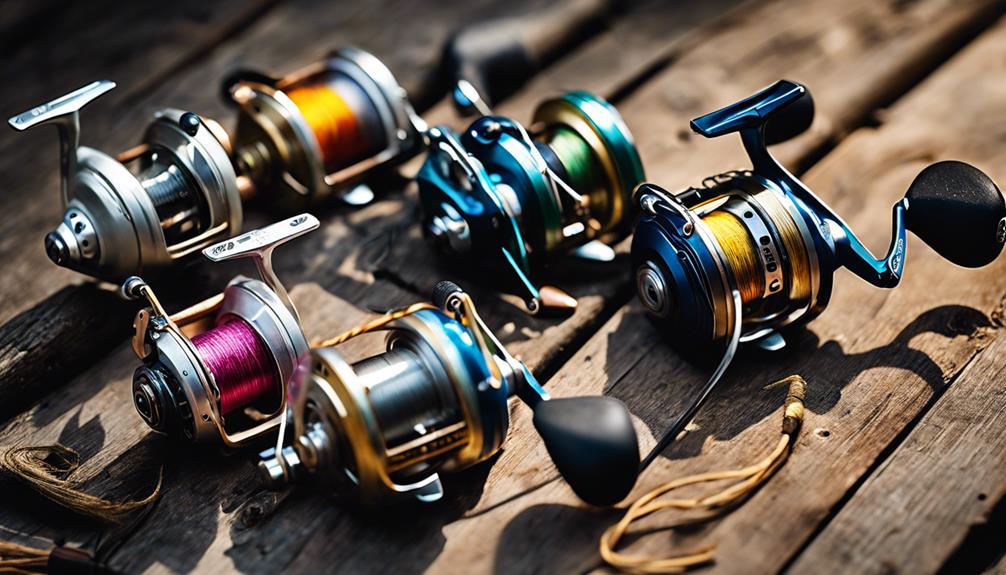Fly fishing is a beloved pastime that combines the beauty of nature with the thrill of catching fish. Central to this captivating sport is the fly fishing pole, a crucial tool that can make or break your experience. In this comprehensive guide, we will delve into everything you need to know about fly fishing poles, including their types, features, and how to choose the best one for your fishing adventures.
Understanding the Basics of Fly Fishing Poles
A fly fishing pole, also known as a fly rod, serves as the primary tool for casting lightweight flies to attract fish. Unlike traditional fishing rods, fly rods are designed to handle the unique demands of fly fishing, which relies on the weight of the line rather than the lure to cast. Fly fishing poles are typically longer, lighter, and more flexible than conventional rods, allowing for precise control and delicate presentations. Understanding these basic characteristics is essential for both novice and experienced anglers who want to enhance their fishing skills.
The Different Types of Fly Fishing Poles
When it comes to selecting a fly fishing pole, you’ll find various types tailored for specific fishing conditions and techniques. The most common types include:
1. Single-Handed Fly Rods: These are the most versatile and widely used rods for freshwater fishing. They usually range from 7 to 9 feet in length and are perfect for casting small to medium flies.
2. Double-Handed Fly Rods: Also known as spey rods, these are longer rods (typically between 12 to 15 feet) designed for casting larger flies and fishing in larger rivers. They are particularly effective in situations where backcasting space is limited.
3. Switch Rods: These rods combine features of single-handed and double-handed rods, offering versatility for different casting techniques. They are typically between 10 to 11 feet long and can be used with either one or two hands.
4. Specialty Rods: There are rods designed for specific types of fishing, such as saltwater fishing, bass fishing, or targeting specific species. Understanding your fishing style will help you choose the right specialty rod.
Key Features to Look for in a Fly Fishing Pole
Selecting the right fly fishing pole involves considering several key features that can affect your overall fishing experience. Here are some important factors to keep in mind:
– Material: Fly rods are commonly made from graphite, fiberglass, or a composite of both. Graphite rods are lightweight and sensitive, making them ideal for beginners and experienced anglers alike. Fiberglass rods, while heavier, offer a slower action that can be advantageous for certain fishing techniques.
– Length: The length of a fly fishing pole impacts casting distance and control. Longer rods allow for longer casts but may be more challenging to control. Conversely, shorter rods provide better accuracy and are easier to handle in tight spaces.
– Action: The action of a rod refers to how much it bends when pressure is applied. Fast action rods bend only at the tip, providing quick responsiveness, while slow action rods bend throughout the length, offering a more forgiving feel. Your choice will depend on your casting style and the type of fish you are targeting.
– Weight: Fly rods are categorized by weight, ranging from 1-14. Lighter rods (1-4 weight) are suitable for small streams and targeting smaller fish, while heavier rods (8-14 weight) are ideal for larger fish and saltwater fishing.
Why You Should Invest in a Quality Fly Fishing Pole
Investing in a high-quality fly fishing pole is crucial for both performance and longevity. A well-constructed rod can significantly improve your casting accuracy, enhance your sensitivity to bites, and ultimately lead to a more successful fishing experience. Quality materials and craftsmanship also ensure that your rod can withstand the rigors of fishing in various environments, from freshwater streams to saltwater flats. While it may be tempting to opt for cheaper options, a quality fly fishing pole can make a significant difference in your overall enjoyment and success.
Matching Your Fly Fishing Pole with the Right Reel and Line
To optimize your fly fishing experience, it’s essential to pair your fly fishing pole with the right reel and line. The reel should balance well with the rod, providing smooth operation when reeling in fish. Additionally, fly lines come in various weights and types, and they must match the rod’s weight for optimal performance. A common rule of thumb is to select a line that corresponds to the weight of your rod. For instance, if you have a 5-weight rod, you should use a 5-weight line. This matching ensures that you achieve the desired casting distance and accuracy.
Maintaining Your Fly Fishing Pole for Longevity
Proper maintenance of your fly fishing pole is key to ensuring its longevity and performance. After each fishing trip, it’s essential to rinse your rod with fresh water to remove any salt, dirt, or debris that may have accumulated. Inspect the rod for any signs of damage, such as cracks or broken guides, and make necessary repairs before your next outing. Additionally, store your fly rod in a protective case to prevent any accidental damage and keep it out of extreme temperatures. Regular maintenance will keep your fly fishing pole in top condition for years to come.
Conclusion: Choosing the Right Fly Fishing Pole for Your Adventures
In conclusion, selecting the right fly fishing pole is a vital step in ensuring a successful and enjoyable fishing experience. By understanding the different types of rods, key features to consider, and the importance of quality, you can make an informed decision that aligns with your fishing style. Remember to match your pole with the appropriate reel and line, and prioritize maintenance to extend its life. Whether you’re a seasoned angler or just starting, the right fly fishing pole will enhance your connection with nature and improve your chances of landing that prized catch. Happy fishing!
